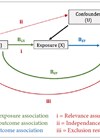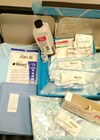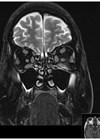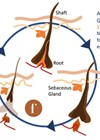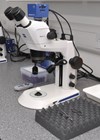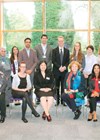Ophthalmology
The founder of modern ophthalmology: Sir William Stewart Duke-Elder
A recent article in Eye News by Blaikie & King highlighted the extraordinary contribution made to the profession of ophthalmology by Sir William Stewart Duke-Elder. The author felt it appropriate to take a further in-depth look at the remarkable career...
Introducing the Royal College of Nursing Ophthalmic Nursing Forum
The Royal College of Nursing (RCN) represents nurses and nursing. While the terms ‘nurses’ and ‘nursing’ are used generically, membership is inclusive of a variety of clinical roles, including midwives, advanced nurse practitioners, advanced clinical practitioners, nurse consultants, registered nursing...
Planes, trams, and auditoriums: Beware predatory conferencing
Predatory open-access journals and predatory conferences are considered the two main areas of predatory infiltration in academic medicine that are of growing concern [1–7]. Unsolicited publishing requests from potentially predatory publishers occur frequently among faculty in ophthalmology [8]. Predatory conferencing...
See sweet to C-suite: Peter Holland
See also - See sweet to C-suite: Imran Rahman In this three-part conversation series, Co-editor David Lockington speaks with highly influential individuals about their journey to the top, with advice for the next generation of leaders. Part One: David speaks...
Robotic assisted orbital surgery (RAOS) – a novel approach to orbital malignancy surgery
Robotic technology in ENT surgery has been used in certain areas of head and neck cancer care but, in this article, we hear of an exciting development from the team at Guy’s & St Thomas’. Advances in surgical robotic technology...
Exploiting nature’s randomised trials of eye disease
Confounding and reverse causation in observational ophthalmic epidemiology Traditional observational studies are inherently limited in establishing a causal effect of an exposure on an outcome of interest. One fundamental limitation is confounding, whereby causation is incorrectly attributed to a third...
Acute management of retrobulbar haemorrhage
The authors discuss the importance of rapid diagnosis and correct management of acute RBH presentation to avoid the risk of permanent blindness. Retrobulbar haemorrhage (RBH) is an ocular emergency that occurs due to arterial bleeding in the orbital cavity behind...
Thyroid eye disease
Thyroid eye disease (TED) is an autoimmune condition with a spectrum of signs and symptoms, usually associated with Graves’ hyperthyroidism. The diagnosis is based on history and physical examination but there are further investigations that can aid diagnosis if unclear....
Sensitive cilia – eyelashes in health and disease
In health our eyelashes protect the eyes, but in disease they can disfigure, impair quality of life and threaten vision. In this review the authors discuss aspects of lashes that are relevant to all professionals working near the eyes and...
Development of a modern surgical simulation suite to promote safer ophthalmic surgical training
For trainees, having access to surgical simulation equipment is more important than ever. The authors describe the creation of a bespoke teaching and training suite in Glasgow to help trainees develop their skills and promote surgical excellence. Simulation has become...
The Leicester Grading System for Foveal Hypoplasia
The University of Leicester Ulverscroft Eye Unit have published the first medical grading system named after the city of Leicester. Infantile nystagmus is characterised by constant and involuntary eye movements and affects 24 per 10,000 people [1]. Onset is usually...
Globes in space: What would happen to our globes on the globe of Mars?
Many films have been made regarding life on alternative planets. With the Mars One mission approaching in 2023, there are high expectations regarding future interplanetary travel. The authors provide an ophthalmology perspective on what could happen to our eyes if...







